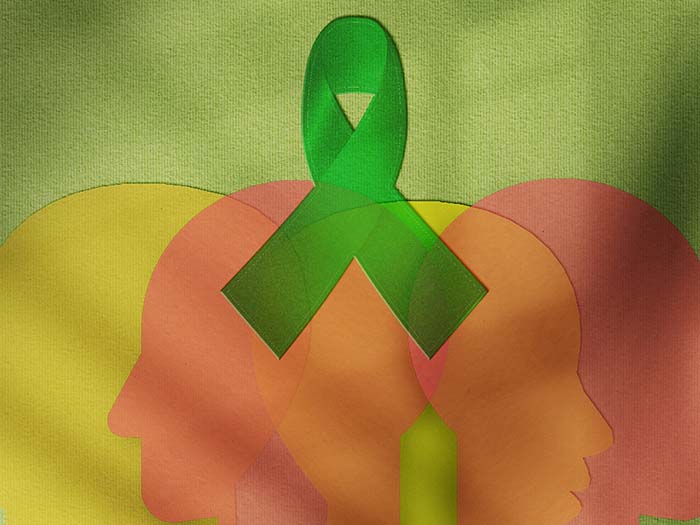Where Are We with Mental Health at Work and What Can Employers Do to Improve It?

The pandemic period was an almost singular force propelling mental health into the public conversation — for individuals, organizations and entire industries.
So you might be surprised to learn that Mental Health Awareness Month, recognized each May, has actually been around since 1949.
The conversations we’re having now around mental health are driving positive change and new strategies. For workers’ comp professionals, these conversations are happening daily, not once a year.
Risk & Insurance sat down with Jennifer Cogbill, senior vice president, GBCARE, Managed Care Advisor Group at Gallagher Bassett, to talk about the multitude of opportunities available to elevate employee mental health and also drive continued improvement in injury outcomes.
Risk & Insurance: Now that more companies are exploring and implementing programs to support their employees’ mental health, where are you seeing some of the key obstacles that they’re facing?
Jennifer Cogbill: While a significant percentage of our population has been coping with behavioral health challenges including depression and anxiety, access to care continues to be a challenge.
For those seeking formal treatment, there have been barriers to care including limited provider options and many providers not accepting insurance.
Further complicating matters is that, unlike with other chronic illnesses such as diabetes, hypertension or arthritis, some employees may not recognize their health issues or are fearful to seek help when they do identify them. This can contribute to a lack of engagement, loss of productivity and absenteeism.
Some people may cope with their depression and anxiety with substance abuse or illicit drugs. In a work-from-home environment, it may be difficult for employers and managers to see how their employees are doing on a daily basis, and social isolation may compound the problem.
R&I: I think we all understand that mental health impacts injury recovery. But can you further break down the different aspects of recovery that are impacted, directly or indirectly?
JC: When an injured worker has a behavioral health issue, they may catastrophize a situation, which can compromise their healing and recovery.
A behavioral health issue may change the way someone processes pain, which could create higher risk for opioid seeking or dependency. This can lead to the person experiencing more anxiety, preventing them from developing trust with their medical providers or returning back to work.
Further, it needs to be recognized that not all injured workers are aware of their behavioral health issues or are willing to admit to them, so it’s critical to have proper training to identify the risks and provide additional assistance to aid in their journey to return to health and work.
R&I: Where is the employee in all of our conversations about employee mental health? How are employees responding to the services being offered? Is take-up generally as expected?
JC: Gallagher Bassett is focused on identifying behavioral health risks through services like our GBCARE Clinical Concierge solution, which provides clinical outreach at the time an injury is first reported.
It includes an evaluation of the injured worker’s risk profile, including biopsychosocial risk factors.
Gallagher Bassett customizes an advocacy model that addresses the injured worker’s specific risk profile, including assistance with any behavioral health needs.
In addition, GBCARE nurses have a behavioral health certification, which allows them to recognize risks as they engage with the injured workers, and to provide support that meets specific needs. This behavioral health certification is critical for severe injuries.
Even though someone may not have a pre-existing behavioral health concern, they can be at high risk of developing a behavioral health issue with a life-altering injury.
When connected to our concierge nurses, injured workers are confiding to them their individual needs, which often include depression, anxiety and a history of substance abuse.
The social stigma around mental health disorders still exists, which makes it critical for our team to recognize and provide help, even if the individual does not recognize the need or is afraid to share.
R&I: The statistics I’ve seen, coming out of the CDC and elsewhere, paint a picture of mental health in America that is strikingly bleak. As far as we’ve come in this area since the pandemic, don’t we still have a long way to go?
JC: Unfortunately, we are not seeing much improvement from the low points of the COVID pandemic.
People are talking more about behavioral risks now, which is a good thing, but we continue to see significant statistics related to drug overdose and suicidal ideations.
Further, there is a disparity between people who seek out mental health professionals. Educated women, for example, are much more likely to seek out a mental health professional than less-educated men.
What we don’t know, however, is if that means educated women are more likely to have issues or if it’s that they are more likely to recognize their problems and try to get access to care.
Telehealth is being promoted as an option to address access to care, as well as expanding the use of clinical social workers. All stakeholders need to work together to reduce social stigma against behavioral health issues and promote pathways to care for those who need it.
R&I: At RISKWORLD 2023, Dr. Casey Chosewood of the CDC presented on mental health, including the mental health of the nation’s health workers. Paraphrasing a key point of Dr. Chosewood’s: ‘If they go down, we all go down.’ Do you see a need for a targeted focus on supporting the mental health needs of our health workers?
JC: The burnout of health care workers is a significant risk to both the health of employees and the recovery of injured workers.
There are trainings that are being offered to medical workers to help them assist patients with behavioral health challenges, as well as to give them coping strategies as they are working through their own stress, anxiety and personal issues.
Hopefully, as we identify better care pathways for patients with behavioral health issues, there will be less stress for health care professionals.
R&I: Given everything we’ve learned throughout the pandemic period and beyond, do you think we now need to make a stronger push toward a proactive approach to mental health — a stronger injury prevention model, if you will, for mental health?
JC: Employers creating a strong culture of supporting employee wellness is the first step.
This includes EAP offerings, as well as a culture of inclusiveness and caring. If and when a work injury takes place, promoting an advocacy model that focuses on supporting the whole person, recognizing that behavioral health challenges can be an obstacle to recovery, is critical. This is in contrast to focusing solely on an injured body part.
These initiatives, together, will help employers to attract and retain talent and promote a happy and healthy workforce. &











